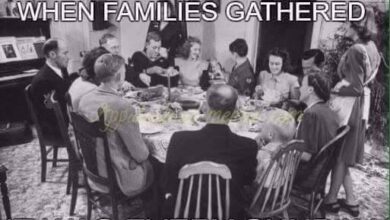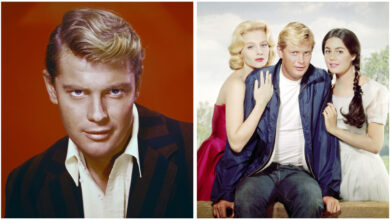77 Sunset Strip” Opening Theme & Intro and TV Show Overview
“77 Sunset Strip” was an iconic American private detective television series that aired from 1958 to 1964. Produced by Warner Bros. Television, the show became a trailblazer in the genre of detective series, influencing numerous other programs throughout the late 1950s and 1960s. One of the most recognizable aspects of the series was its catchy and vibrant theme song, which accompanied the opening credits, making it a beloved part of the show for viewers. The theme, composed by Mack David and Jerry Livingston, had a jazzy, upbeat rhythm that matched the cool, sophisticated tone of the show. The intro featured the lead characters, especially the dashing private detectives Stuart Bailey (played by Efrem Zimbalist Jr.) and Jeff Spencer (played by Roger Smith), as they walked along the strip, creating an image of smooth, sharp-dressed private eyes on a mission.
The title sequence, showing the detectives strolling down a stylized representation of the real Sunset Strip in West Hollywood, helped solidify the image of “77 Sunset Strip” as a modern, glamorous detective series. The show’s signature snap of fingers in time with the music became a cultural trademark, immediately recognizable by its audience. The opening theme captured the spirit of the late 1950s: a time of sleek fashion, cool jazz, and the burgeoning influence of television on American culture.
The setting of “77 Sunset Strip” revolved around the fictional offices of Bailey & Spencer, a private detective agency located on the actual Sunset Boulevard in Los Angeles, which became synonymous with the glitz and glamour of Hollywood. The detectives solved a variety of cases, from high-stakes murder mysteries to complex espionage situations, often involving the rich and famous. What set the show apart was its unique combination of drama, action, and light-hearted humor, particularly brought to life through its quirky supporting characters, including the cool Kookie, played by Edd Byrnes.
One of the most beloved characters was Gerald Lloyd “Kookie” Kookson III, a parking attendant at Dino’s Lodge (a real restaurant on the Sunset Strip), who was always combing his hair and speaking in hip slang. His character became a cultural phenomenon, representing the rebellious youth culture of the time. His popularity even led to the release of a hit single, “Kookie, Kookie (Lend Me Your Comb),” a duet with Connie Stevens. Kookie eventually became a part-time private investigator, working for Bailey & Spencer, which added a youthful dynamic to the show’s detective work.
“77 Sunset Strip” became a hit not only for its compelling storylines but also for its stylish presentation. The show was filmed in Hollywood, using many real locations on the actual Sunset Strip, which gave it a sense of authenticity and appeal to audiences familiar with the area. Viewers were drawn to the series not just for its action-packed mysteries, but also for the glamorous depiction of Los Angeles and the world of private detectives.
The success of “77 Sunset Strip” also laid the groundwork for Warner Bros. to create a series of detective shows in the same mold, such as “Hawaiian Eye,” “Bourbon Street Beat,” and “Surfside 6.” These shows, while set in different locations, all had a similar formula—charming and witty detectives solving crimes in glamorous settings, with an emphasis on style, romance, and action. These spin-offs created a television universe that was interconnected, often having characters from one show appear on another, further boosting the popularity of Warner Bros.’ detective series during that era.
As the show progressed, “77 Sunset Strip” adapted to changes in audience tastes and television trends. While the earlier seasons were lighthearted and fun, later seasons took on a more serious tone, focusing more on darker, grittier crime stories. This shift reflected broader changes in American culture as the 1960s progressed, with the show moving away from its playful origins to embrace a more dramatic, intense atmosphere. However, this change was met with mixed reactions, as many fans preferred the light-hearted charm of the original format.
Unfortunately, by the show’s sixth and final season, major changes were made in an attempt to revitalize the series, including the elimination of most of the original cast and the introduction of new characters. This drastic overhaul was not well-received, and the show ultimately concluded its run in 1964. However, its legacy continued, as it had a lasting impact on the television industry and the detective genre in particular. “77 Sunset Strip” set the stage for the detective shows that followed, with its combination of style, intrigue, and humor.
Beyond its cultural impact, “77 Sunset Strip” also contributed to the careers of its cast members, most notably Efrem Zimbalist Jr. and Roger Smith. Zimbalist became a well-known television actor and went on to star in another successful series, “The F.B.I.” Roger Smith, on the other hand, became widely recognized for his role in the show and later shifted into management, famously marrying actress Ann-Margret and managing her career.
Despite its eventual decline in popularity, “77 Sunset Strip” remains a nostalgic favorite for fans of classic television. Its memorable theme song, iconic characters, and depiction of Hollywood’s Sunset Strip captured the imagination of viewers during its time on air. The show’s blend of mystery, action, and humor, along with its stylish portrayal of 1950s and 1960s Los Angeles, ensured its place in television history.
In conclusion, “77 Sunset Strip” was more than just a detective show; it was a symbol of its era, representing the glamour and intrigue of Hollywood, as well as the growing influence of television on American pop culture. Its influence on the detective genre can still be seen today, and its opening theme remains one of the most iconic in television history, with its snapping fingers and jazzy melody continuing to evoke memories of a bygone era of television.





